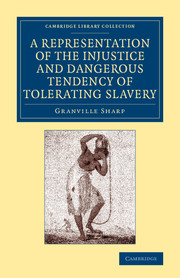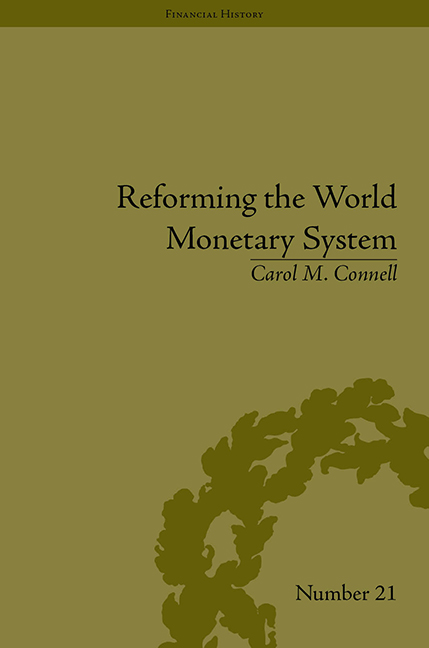Refine search
Actions for selected content:
26946 results in Economic history

A Representation of the Injustice and Dangerous Tendency of Tolerating Slavery
-
- Published online:
- 05 December 2014
- Print publication:
- 17 July 2014
- First published in:
- 1769
5 - The Banco Nacional de Desenvolvimento Econômico e Social (National Bank for Economic and Social Development, BNDES)
-
- Book:
- Federal Banking in Brazil
- Published by:
- Pickering & Chatto
- Published online:
- 05 December 2014, pp 145-172
-
- Chapter
- Export citation
Chronology
-
- Book:
- Gambling on the American Dream
- Published by:
- Pickering & Chatto
- Published online:
- 05 December 2014, pp x-xiv
-
- Chapter
- Export citation
Acknowledgements
-
- Book:
- Migrants and Urban Change
- Published by:
- Pickering & Chatto
- Published online:
- 05 December 2014, pp vii-viii
-
- Chapter
- Export citation
Preface
-
-
- Book:
- The Development of International Insurance
- Published by:
- Pickering & Chatto
- Published online:
- 05 December 2014, pp ix-x
-
- Chapter
- Export citation
Notes
-
- Book:
- Reforming the World Monetary System
- Published by:
- Pickering & Chatto
- Published online:
- 05 December 2014, pp 227-246
-
- Chapter
- Export citation
Notes
-
- Book:
- Migrants and Urban Change
- Published by:
- Pickering & Chatto
- Published online:
- 05 December 2014, pp 225-288
-
- Chapter
- Export citation
Acknowledgements
-
- Book:
- Gambling on the American Dream
- Published by:
- Pickering & Chatto
- Published online:
- 05 December 2014, pp vi-vii
-
- Chapter
- Export citation
Introduction: An Unlimited Partnership
-
- Book:
- Entrepreneurial Families
- Published by:
- Pickering & Chatto
- Published online:
- 05 December 2014, pp 1-8
-
- Chapter
- Export citation

Reforming the World Monetary System
- Fritz Machlup and the Bellagio Group
-
- Published by:
- Pickering & Chatto
- Published online:
- 05 December 2014
-
- Book
- Export citation
8 - Collaboration with the Group of Ten
-
- Book:
- Reforming the World Monetary System
- Published by:
- Pickering & Chatto
- Published online:
- 05 December 2014, pp 109-124
-
- Chapter
- Export citation
3 - The Making of a Gold Standard: The Ducat and its Offspring, 1284–2001
-
-
- Book:
- Money in the Pre-Industrial World
- Published by:
- Pickering & Chatto
- Published online:
- 05 December 2014, pp 45-62
-
- Chapter
- Export citation
10 - From the Bellagio Group to the Bürgenstock Conferences
-
- Book:
- Reforming the World Monetary System
- Published by:
- Pickering & Chatto
- Published online:
- 05 December 2014, pp 143-160
-
- Chapter
- Export citation

Entrepreneurial Families
- Business, Marriage and Life in the Early Nineteenth Century
-
- Published by:
- Pickering & Chatto
- Published online:
- 05 December 2014
-
- Book
- Export citation
Introduction
-
- Book:
- Gambling on the American Dream
- Published by:
- Pickering & Chatto
- Published online:
- 05 December 2014, pp 1-10
-
- Chapter
- Export citation
Appendix I - Source Materials, Samples and Classifications
-
- Book:
- Migrants and Urban Change
- Published by:
- Pickering & Chatto
- Published online:
- 05 December 2014, pp 197-216
-
- Chapter
- Export citation
4 - The Structure of Latin American Investment in Equipment Goods during the Mature Period of the First Globalization
-
-
- Book:
- The Economies of Latin America
- Published by:
- Pickering & Chatto
- Published online:
- 05 December 2014, pp 69-82
-
- Chapter
- Export citation
4 - The Subsoil as Private Property
- from Part II - The Struggle to Develop Minerals
-
- Book:
- Mining and the State in Brazilian Development
- Published by:
- Pickering & Chatto
- Published online:
- 05 December 2014, pp 55-78
-
- Chapter
- Export citation
6 - Managerial Practices and Transatlantic Tension
-
- Book:
- Multinationals, Subsidiaries and National Business Systems
- Published by:
- Pickering & Chatto
- Published online:
- 05 December 2014, pp 59-66
-
- Chapter
- Export citation
11 - The Weakening of Falconbridge and the Strengthening of the Kristiansand Subsidiary
-
- Book:
- Multinationals, Subsidiaries and National Business Systems
- Published by:
- Pickering & Chatto
- Published online:
- 05 December 2014, pp 113-122
-
- Chapter
- Export citation
